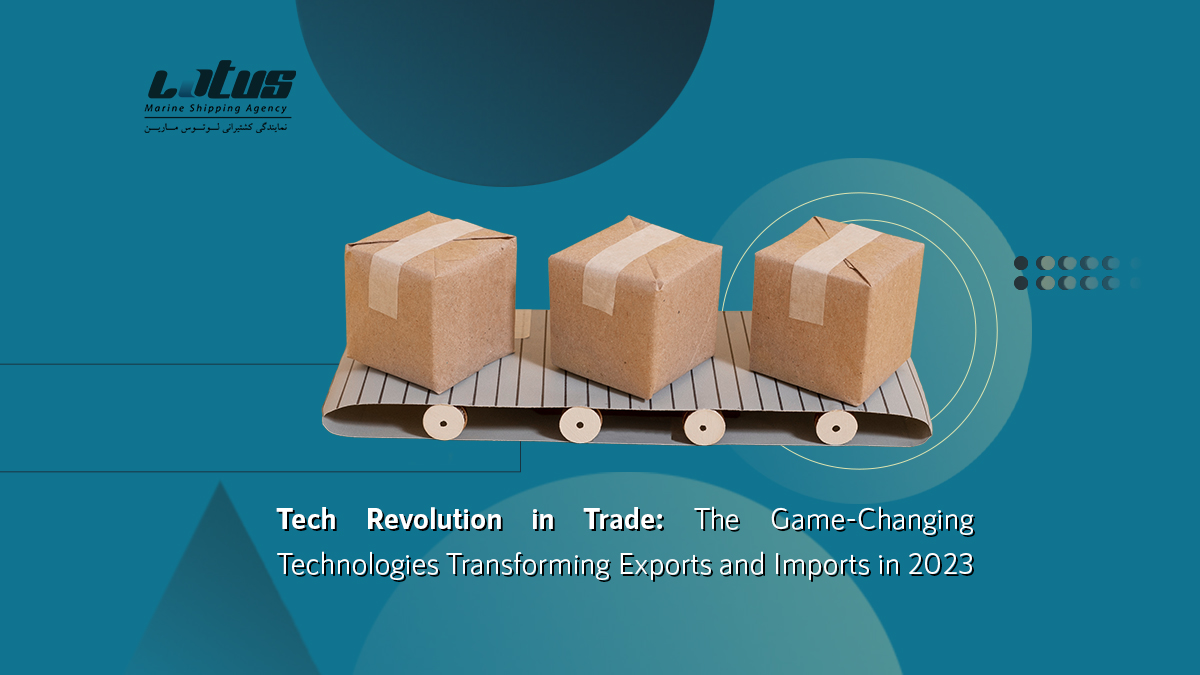- By admin
- January 14, 2024
- General
- 0 Comments
Introduction
As we step into 2023, the landscape of international trade is undergoing a seismic shift, thanks to the rapid advancement of technology. This article delves into the various technologies revolutionizing exports and imports, shaping a new era in global trade.
Understanding the Tech Revolution in Trade
Defining the Tech Revolution
The tech revolution refers to the integration of advanced technologies in various sectors, leading to unprecedented changes and efficiencies. In the realm of trade, this revolution is not just a future possibility but a current reality.
Impact on Global Trade
These technologies are redefining how goods are manufactured, shipped, and tracked, leading to more efficient, secure, and transparent trade processes.
Blockchain: Enhancing Transparency and Security
Blockchain Basics
Blockchain technology offers a decentralized ledger system, ensuring transparency and security in transactions.
Application in Trade
In trade, blockchain is a game-changer, enabling secure and transparent tracking of goods from manufacturer to consumer.
AI and Machine Learning: Predictive Analytics and Automation
AI in Market Analysis
Artificial Intelligence (AI) and Machine Learning (ML) are pivotal in analyzing market trends and consumer behavior, enabling businesses to make informed decisions.
Automation in Logistics
These technologies also automate logistical processes, reducing human error and increasing efficiency.
IoT: Real-Time Tracking and Efficiency
IoT Explained
The Internet of Things (IoT) connects physical objects to the internet, allowing for real-time data collection and analysis.
IoT in Supply Chain Management
In trade, IoT devices provide real-time tracking of goods, significantly improving supply chain management.
3D Printing: Revolutionizing Manufacturing
Overview of 3D Printing
3D printing technology enables on-demand, localized manufacturing, which can drastically reduce shipping costs and times.
Implications for Export and Import
This technology allows for more flexible and responsive manufacturing processes, impacting both exports and imports.
Robotics: Increasing Efficiency in Warehousing
Robotics in Logistics
Robotics technology is increasingly being used in warehousing and logistics for tasks like packing and sorting, enhancing efficiency.
Future Trends
The continued advancement in robotics promises even more significant impacts in trade logistics.
Cybersecurity: Protecting Trade Data
Importance of Cybersecurity
With the increase in digital data flow in trade, cybersecurity becomes crucial to protect sensitive information from cyber threats.
Best Practices
Adopting best practices in cybersecurity ensures the integrity and security of trade data, fostering trust in digital trade systems.
Green Technologies: Sustainable Trade Solutions
Emerging Green Tech
Sustainable technologies are being integrated into trade to reduce environmental impact, such as renewable energy sources and eco-friendly packaging.
Impact on Trade
These green technologies not only benefit the environment but also offer cost savings and efficiency improvements in the long run.
Digital Platforms: Streamlining Trade Operations
E-commerce in Trade
Digital platforms have transformed traditional trade, with e-commerce facilitating easier and faster international transactions.
Digital Documentation
The digitization of trade documentation simplifies and accelerates customs clearance and compliance processes.
Challenges and Solutions
Technological Challenges
Adopting these technologies comes with challenges, including high initial costs and the need for skilled personnel.
Policy and Regulation
Navigating the complex landscape of international regulations and policies is crucial for the successful implementation of these technologies in trade.
Case Studies: Successful Implementations
Real-World Examples
Exploring case studies where technology has successfully transformed trade operations provides valuable insights and best practices.
Lessons Learned
These examples offer lessons on overcoming challenges and maximizing the benefits of technology in trade.
Future of Trade: Predictions and Trends
Upcoming Innovations
Looking ahead, we anticipate further innovations in technology that will continue to reshape the landscape of international trade.
Market Predictions
Predictions for the future of trade include increased automation, more sustainable practices, and greater data-driven decision-making.
Conclusion
The tech revolution in trade is not just transforming how we conduct international business; it’s redefining the very fabric of global commerce. As we embrace these technologies, we step into a future of more efficient, secure, and sustainable trade.
FAQs
- How is blockchain technology impacting international trade? Blockchain is enhancing the transparency and security of trade transactions, fostering trust among trade partners.
- What role does AI play in the trade industry? AI is used for market analysis, predictive analytics, and automating logistical processes in trade.
- Can 3D printing affect global supply chains? Yes, 3D printing allows for localized manufacturing, which can reduce shipping costs and times.
- What are the challenges in adopting these technologies in trade? Challenges include high initial investment, need for skilled personnel, and navigating complex regulations.
- How will green technologies change the future of trade? Green technologies will lead to more sustainable trade practices, reducing environmental impact and potentially lowering costs.

